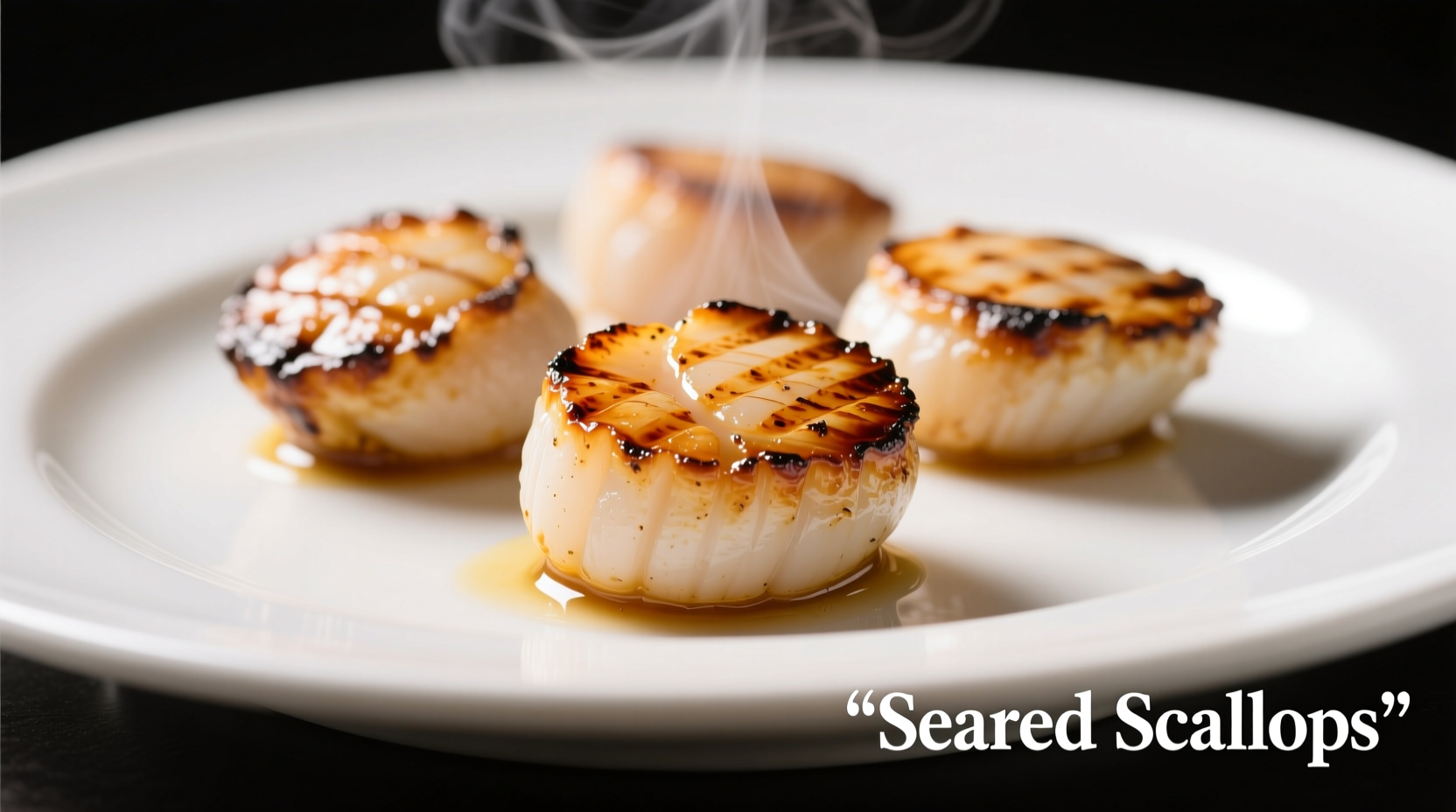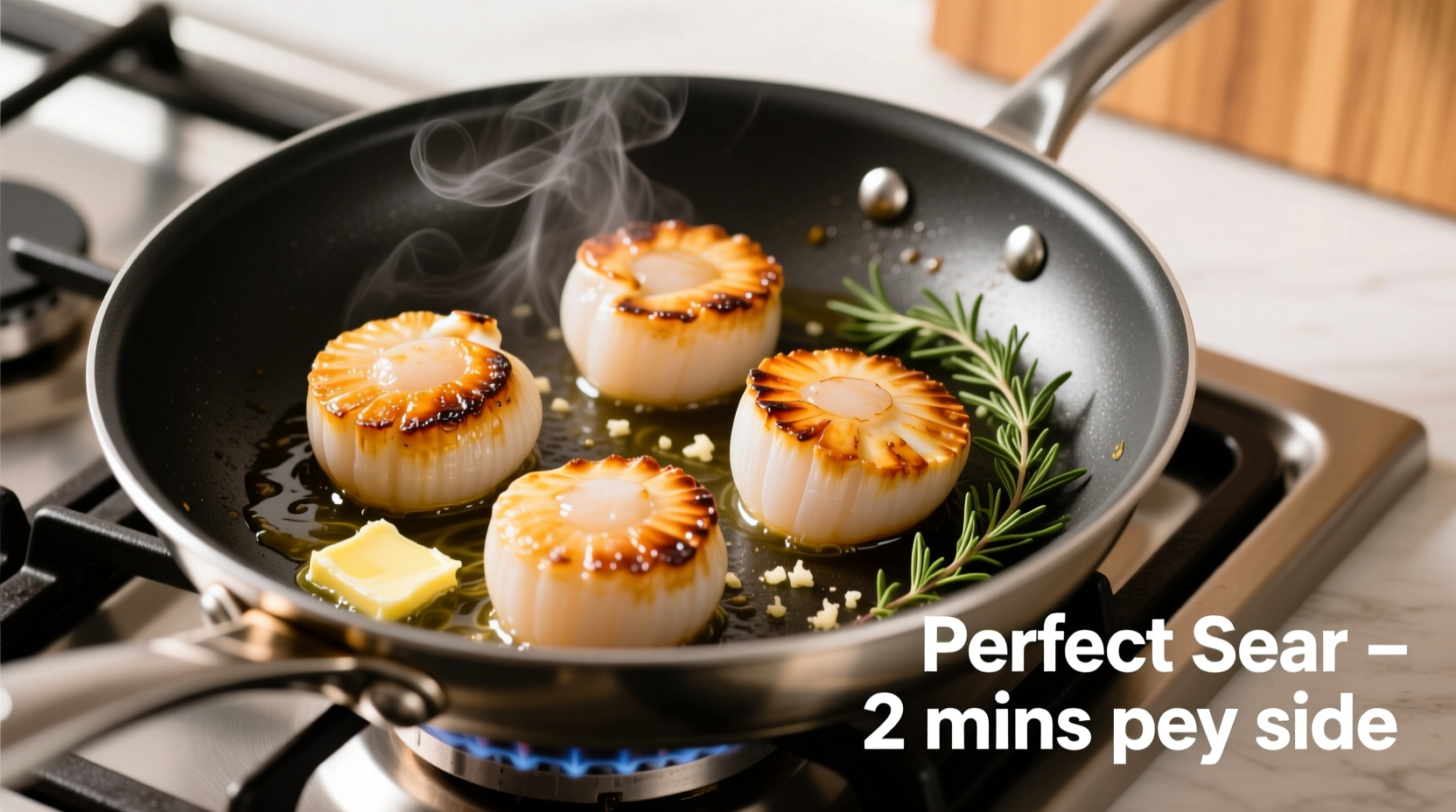Why This Stovetop Method Works
Most home cooks struggle with rubbery or stuck scallops because they skip critical preparation steps. According to the FDA's seafood handling guidelines, proper drying and temperature control prevent the protein denaturation that causes toughness. Professional chefs consistently achieve perfect sear because they understand these three fundamentals:
- Dry surface = better browning (Maillard reaction requires moisture-free surface)
- High initial heat creates instant crust formation
- No premature flipping prevents tearing and sticking
Essential Preparation: The 20-Minute Rule
What happens before the scallops hit the pan determines 80% of your success. This isn't optional - it's food science.
| Dry vs. Wet Scallops | Characteristics | Best Cooking Approach |
|---|---|---|
| Dry-packed | Natural ivory color, no chemical smell, firm texture | Pat dry and cook immediately after 15-20 min air-drying |
| Wet-packed (treated) | Translucent, slightly sticky, chemical odor | Soak in cold water 10 min, then dry 30+ min on paper towels |
Follow this preparation sequence for guaranteed results:
- Thaw properly: If frozen, transfer to refrigerator 24 hours before cooking
- Dry thoroughly: Place on triple-layer paper towels, cover with more towels, refrigerate 15-20 minutes
- Season right before cooking: Salt draws out moisture - wait until pan is hot
- Bring to room temperature: Remove from fridge 10 minutes before cooking
The Perfect Stovetop Cooking Process
Timing is everything. Scallops cook in approximately 90 seconds per side. Use this visual timeline:
| Time | What's Happening | Critical Action |
|---|---|---|
| 0:00 | Scallops hit 400°F+ pan | Press gently for full contact |
| 0:30 | Steam begins forming at edges | Do NOT move or peek |
| 1:15 | Golden crust forms, natural release begins | Test for release with spatula |
| 1:45 | Perfect sear achieved | Flip and cook 60-90 seconds second side |
Pan Selection Matters
Cast iron and carbon steel provide the most consistent results due to superior heat retention. Non-stick pans often prevent proper crust formation. For best results:
- Preheat empty pan 3-5 minutes over medium-high heat
- Add high-smoke point oil (avocado, grapeseed, or clarified butter)
- Test heat with water droplet - should sizzle and evaporate instantly
- Cook in single layer with space between scallops

Finishing Touches That Elevate Your Dish
The cooking process ends at 2:30, but your scallops need these final steps:
- Rest 2 minutes on warm plate (carryover cooking completes the process)
- Add finishing butter (1 tbsp cold butter swirled in pan after removing scallops)
- Squeeze fresh lemon just before serving
- Season with flaky salt (Maldon preferred) for texture contrast
When This Method Might Not Work
Understanding context boundaries prevents frustration. This technique works best with:
- Sea scallops (1.5-2" diameter) - not bay scallops
- Fresh or properly thawed frozen scallops
- Home stovetops with adequate BTU output
Limitations to know: Electric coil burners require longer preheating. Induction works exceptionally well. Gas ranges need medium-high (not maximum) heat to prevent scorching. Never attempt this with frozen scallops - the temperature shock guarantees failure.
Troubleshooting Common Problems
Fix these issues before they happen:
- Sticking scallops: Pan wasn't hot enough or scallops weren't dry enough
- Steam instead of sear: Too many scallops in pan lowered temperature
- Rubbery texture: Overcooked by even 30 seconds or used wet-packed without proper drying
- Uneven browning: Inconsistent scallop thickness - ask fishmonger for "dayboat" scallops
Pro Tips From Restaurant Kitchens
Professional chefs use these tricks you can implement at home:
- Place a metal ring or cookie cutter around each scallop for perfect cylindrical shape
- Add a pinch of sugar to seasoning to accelerate caramelization
- Cook scallops in clarified butter for richer flavor (replace every 2-3 batches)
- Use a fish spatula for easiest flipping - its thin edge slides under scallops effortlessly











 浙公网安备
33010002000092号
浙公网安备
33010002000092号 浙B2-20120091-4
浙B2-20120091-4